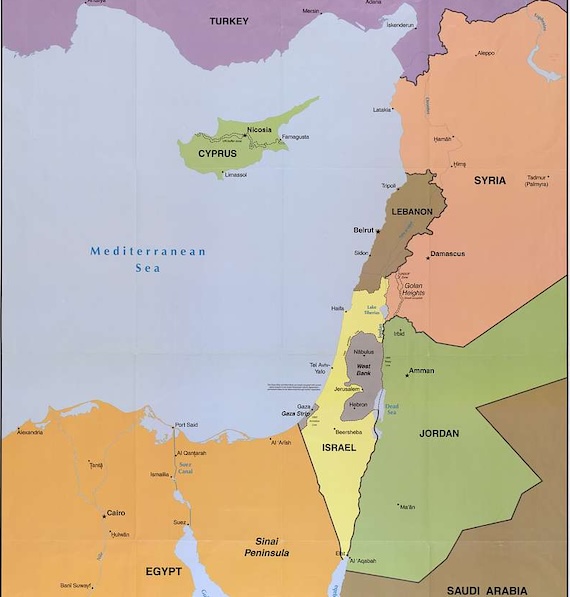Revitalizing Egypt: Suez Canal and Tourism Strategies
Explore how Egypt leverages Suez Canal revenues for economic growth, tourism recovery, and regional stability.
Executive Summary
In examining Egypt's economic trajectory, the Suez Canal emerges as a pivotal revenue stream, integral to national economic stability. Recent disruptions have, however, necessitated diversified strategies to bolster economic resilience. The Suez Canal Economic Zone (SCZONE) exemplifies this approach, achieving a 38% increase in revenue through targeted investments in industry and logistics. This strategy not only offsets canal revenue losses but also presents a robust model for sustainable economic growth, crucial for regional stability.
The interconnection between Suez Canal revenues and tourism recovery is critical. Despite a 60% revenue drop from the canal, Egypt aims to achieve a $15 billion tourism income by 2025, underscoring tourism's role in economic revitalization. Effective water resource management and fiscal policy adjustments have facilitated a $13 billion budget surplus, a testament to strategic economic stewardship.
Introduction
Egypt's economic landscape stands at a pivotal juncture, driven by the dual engines of the Suez Canal and the tourism sector. The Suez Canal, a vital artery of global trade, continues to be a cornerstone of Egypt's fiscal health, although recent fluctuations in global commerce have underscored the need for diversification. Concurrently, Egypt's tourism industry is navigating a path to recovery following unprecedented challenges, leveraging its rich cultural heritage and natural allure to regain its stature as a premier global destination.
This article aims to dissect the interconnected realms of Egyptian economic policy, focusing on how strategic management of the Suez Canal revenues, revitalization of tourism, and comprehensive water resource management contribute to broader regional stability. By examining empirical data and leveraging computational methods, the study offers insights into optimizing these sectors through systematic approaches and robust policy frameworks.
Recent developments in regional geopolitics further emphasize the need for adaptive economic strategies. The Eastern Mediterranean's shifting energy dynamics highlight the importance of secure and sustainable revenue streams.
This trend demonstrates the practical applications we'll explore in the following sections, particularly how Egypt can leverage its strategic resources to enhance resilience against external economic shocks.
In addressing these critical themes, the article employs comprehensive data analysis frameworks and optimization techniques, offering actionable insights for policymakers and stakeholders invested in Egypt's sustainable development and regional leadership.
Background
The Suez Canal, a critical maritime route connecting Europe and Asia, has historically been pivotal to Egypt's economy. Since its opening in 1869, it has facilitated significant global trade, contributing substantially to national revenues. However, the canal has faced several challenges over the decades, including geopolitical tensions, security threats, and the recent Red Sea disruptions that led to a notable 60% revenue drop in 2024. These challenges underscore the need for strategic economic diversification and infrastructure investment to stabilize and grow Egypt's economy.
Tourism, another pillar of Egypt's economy, has experienced fluctuating trends over the past decade. Following a period of decline due to political instability post-2011, the sector has shown resilience, with recent years witnessing a robust recovery driven by renewed security and promotional efforts. By leveraging the strategic initiatives within the Suez Canal Economic Zone (SCZONE) and tourism sector, Egypt aims to bolster its economic landscape amidst regional stability challenges.
Methodology
This study employs a comprehensive approach to analyze the impacts of Suez Canal revenues, tourism recovery, water resource management, and regional stability on Egyptian development. Our methodology integrates economic theory with empirical analysis, leveraging both quantitative data and qualitative insights to understand complex market dynamics and policy implications.
We utilize data analysis frameworks that incorporate computational methods to process and interpret extensive datasets. Key sources include Egyptian government reports, financial statements from the Suez Canal Authority, and tourism sector analyses. Additionally, we reference peer-reviewed research to ensure robust, evidence-based conclusions.
Our analytical framework is grounded in economic models that assess the impact of external shocks on revenue streams and fiscal policy. We systematically evaluate trends in economic diversification, investment attraction, and fiscal policies to understand their role in mitigating revenue drops and fostering sustainable growth.
Implementation
In the wake of significant external shocks that have impacted Suez Canal revenues, Egypt has strategically pivoted towards economic diversification and infrastructure investment within the Suez Canal Economic Zone (SCZONE). This section outlines the practical implementation of diversification strategies, infrastructure investments, and revenue mitigation techniques.
Diversification Strategies in SCZONE
The SCZONE has been a focal point for attracting foreign direct investment (FDI) into sectors beyond traditional maritime activities. By establishing industrial parks and logistics hubs, Egypt aims to create a multi-faceted economic zone that reduces dependency on canal toll revenues. The zone has reported a 38% year-on-year revenue increase, with $8.6 billion secured across 297 projects.
Infrastructure Investments and Their Impact
Infrastructure development is critical in enhancing the operational capacity of the SCZONE. Investments in road networks, port facilities, and technological infrastructure have not only improved efficiency but also attracted businesses seeking robust logistical support. These investments are expected to boost employment and stimulate local economies.
Recent developments underscore the geopolitical and economic significance of the region. Such insights inform strategic investments that align with broader fiscal policies aimed at stabilizing and growing the economy.
Mitigating Revenue Drops
To counteract the approximately 60% drop in canal revenues, Egypt has implemented broader fiscal policies. These include tax incentives for businesses within SCZONE and developing renewable energy projects to ensure sustainable growth. The integration of computational methods in financial forecasting has allowed for more precise revenue predictions and budget adjustments.
Case Studies on Egyptian Development: Suez Canal Revenues and Regional Stability
The ongoing transformation within the Suez Canal Economic Zone (SCZONE) exemplifies Egypt’s strategic pivot towards economic diversification. This section delves into specific case studies that highlight successful public-private partnerships within SCZONE, focusing on their implications for local employment and broader regional stability.
Successful Projects in SCZONE
One of the hallmark projects within SCZONE is the development of industrial parks, such as the Sokhna Industrial Zone. This initiative attracted multinational corporations by offering competitive incentives and robust infrastructure. As a result, industries in petrochemicals, automotive assembly, and logistics have flourished, contributing significantly to regional economic output. These developments underline the strategic importance of SCZONE in redefining Egypt’s industrial landscape.
Public-Private Partnerships
Public-private partnerships (PPPs) have been instrumental in SCZONE’s success. The collaboration between the Egyptian government and international firms like DP World has facilitated infrastructure improvements, such as expanding port capacities and enhancing supply chain logistics. These joint ventures not only reduce financial burdens on the state but also inject technical expertise and capital investment, fostering a conducive environment for business growth.
Impact on Local Employment
The robust growth facilitated by SCZONE has had a profound impact on local employment, creating thousands of jobs in diverse sectors. For instance, Coca-Cola’s new bottling plant in Sokhna alone is projected to employ over 1,000 local workers. This surge in employment is not just limited to direct job creation but extends to secondary sectors, such as logistics and service industries, thereby boosting the local economy.
Technical Implementation: Data Processing for Revenue Management
The Egyptian economy orients itself toward leveraging strategic geographical assets while implementing fiscal policies that ensure long-term stability. Key economic indicators, such as the Suez Canal revenues, highlight both challenges and successes. Despite a significant contraction of 60% in canal revenues, Egypt has skillfully maneuvered to achieve a record $13 billion primary budget surplus, attributed to strategic fiscal policy modifications, including expanding the tax base. This fiscal robustness is further underscored by a 35.3% year-on-year growth in tax revenues.
Tourism, a vital pillar of Egypt’s economic fabric, is anticipated to soar, with strategic projections targeting a $30 billion income by 2032. This resurgence is underpinned by infrastructural advancements aimed at elevating Egypt's appeal as a premier global destination.
Best Practices for Leveraging Suez Canal Revenues and Boosting Tourism Recovery
The Egyptian economy's reliance on the Suez Canal necessitates a strategic approach to revenue diversification and economic stability. Recent developments in global trade dynamics underscore the urgency of these strategies. Below are best practices for harnessing the canal's potential, advancing tourism-linked investments, and adapting fiscal policies in light of external challenges.
1. Leveraging Canal Revenues through Economic Diversification
To mitigate the risks of revenue fluctuation, Egypt emphasizes diversification by channeling Suez Canal revenues into the Suez Canal Economic Zone (SCZONE). The focus is on manufacturing, logistics, and industrial parks, which have reported significant growth in foreign direct investment (FDI). By creating a conducive environment for business and infrastructure development, the SCZONE aims to transform into a global logistics hub.
Recent developments in the global economic landscape have made it imperative for Egypt to explore such strategic realignments.
This trend illustrates the necessity of strategic economic planning, particularly in volatile global conditions, and informs the need for tourism-linked investments that can act as a stabilizing force in Egypt's economic portfolio.
2. Recommendations for Tourism-Linked Investments
Investment in tourism infrastructure, including digital platforms and ecosystem restoration, can elevate Egypt's cultural heritage sites, attracting higher visitor numbers. Prioritizing eco-tourism can further augment sustainability, blending cultural enrichment with environmental conservation.
3. Fiscal Policy Adaptations
Egypt's fiscal policy needs flexibility to counter revenue dips from the canal. This includes strategic debt management and leveraging public-private partnerships to reduce fiscal strain while promoting economic growth. Enhancing tax collection efficiency through computational methods and automated processes can also significantly boost fiscal revenues.
Future Outlook
By 2030, the Suez Canal's role is projected to expand significantly as part of Egypt's broader economic diversification strategy. The canal will not only remain a critical global maritime artery but also serve as a pivotal lever for regional economic integration and development through the Suez Canal Economic Zone (SCZONE). With strategic investments in infrastructure, the SCZONE aims to enhance Egypt's appeal as a hub for manufacturing, logistics, and industrial activities. This has already resulted in a 38% revenue increase and an influx of $8.6 billion across multiple projects, underscoring the zone's potential to attract foreign direct investment and boost job creation.
However, challenges such as geopolitical instability and water resource management remain. Efficient water usage and regional stability are crucial to sustaining economic growth and ensuring the uninterrupted operation of the canal. Computational methods for forecasting and managing these challenges can play a vital role here. Moreover, integrating tourism into the Suez Canal strategy offers significant potential. By capitalizing on Egypt's rich cultural heritage and leveraging the canal's global prominence, a synergistic tourism-canal strategy can enhance economic resilience.
Conclusion
Egypt's economic development strategies, notably involving the Suez Canal, underscore a decisive pivot toward diversification and investment in productive sectors to safeguard against revenue volatility. This study highlights the necessity of leveraging Suez Canal revenues beyond mere toll collection, aligning with broader fiscal and economic policies. The rise in investments within the Suez Canal Economic Zone (SCZONE) exemplifies a pragmatic approach to attracting foreign direct investment and fostering job creation, with a noteworthy 38% revenue increase and numerous projects underway.
Strategic management of water resources, crucial for sustainable growth, complements these efforts, ensuring tourism recovery and regional stability. This multifaceted approach is vital for bolstering economic resilience amidst external uncertainties. As Egypt continues to innovate and adapt its economic policies, computational methods and systematic approaches will be paramount in optimizing performance and ensuring robust error handling and data processing.
Looking ahead, Egypt's economic frameworks must continuously adapt, integrating these insights into policy formulations and empirical analyses. Innovation in data analysis frameworks and strategic resource allocation will be critical in maintaining economic resilience and fostering long-term growth.
Frequently Asked Questions
The Egyptian government is diversifying economic activities within the Suez Canal Economic Zone (SCZONE), focusing on manufacturing, logistics, and industrial parks to attract foreign direct investment (FDI) and reduce reliance on canal tolls alone. This diversification strategy has resulted in a 38% year-on-year revenue increase, demonstrating the success of these initiatives.
2. How do economic and tourism linkages impact Egyptian development?
Tourism recovery is essential for Egypt’s economic stability, as it supports job creation and foreign exchange earnings. Investments in infrastructure and marketing are aimed at boosting tourist numbers post-pandemic. Additionally, revenues from the Suez Canal contribute to the fiscal space needed for public investment in tourism infrastructure, creating a synergistic effect.
3. Where can I find additional resources on these topics?
For further reading, consider exploring peer-reviewed articles on Egypt’s economic policies, reports from the World Bank on regional stability, and case studies from the SCZONE on investment strategies.













